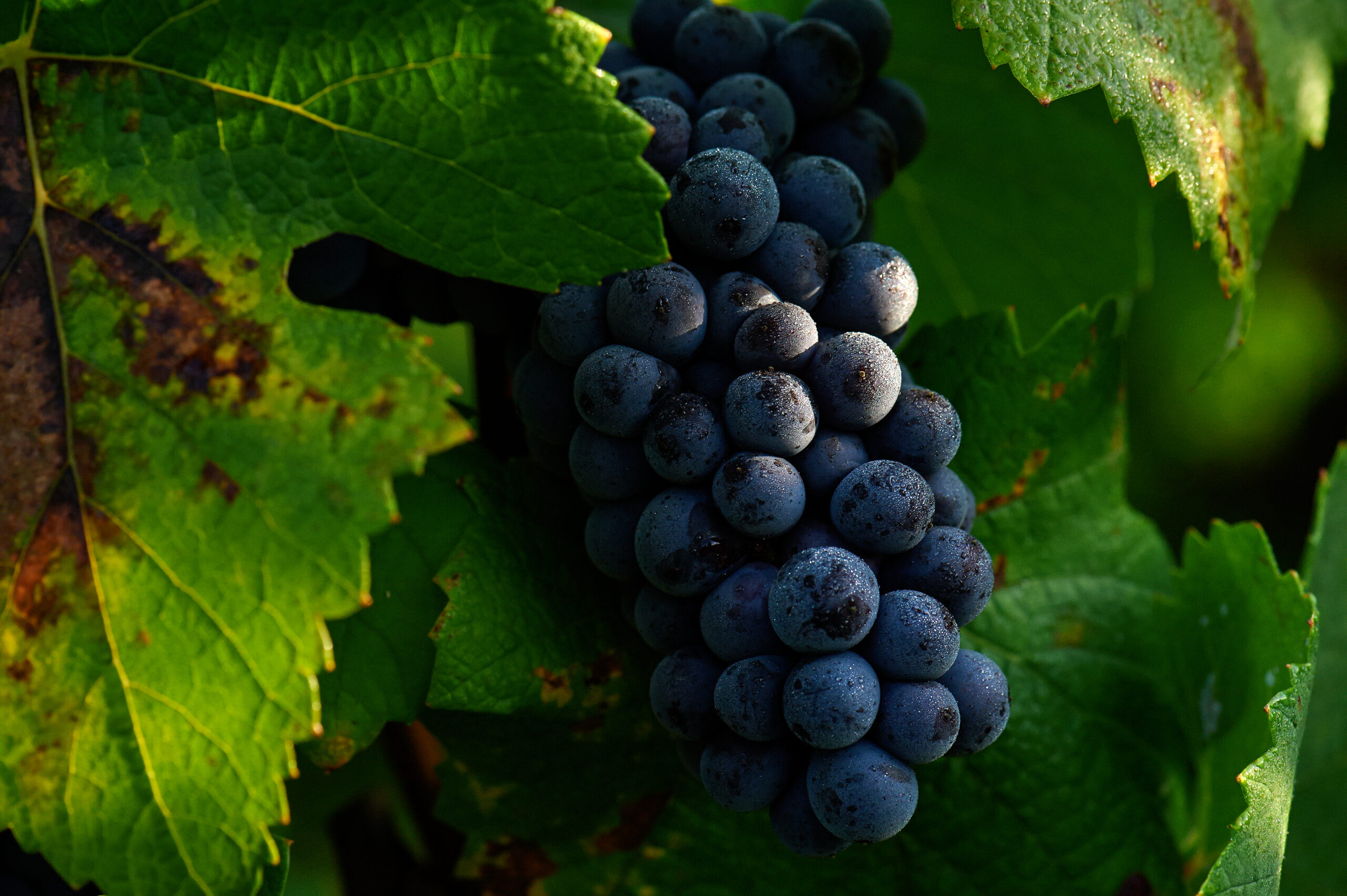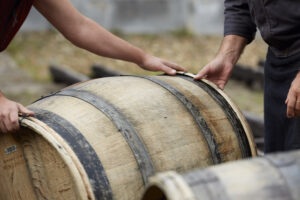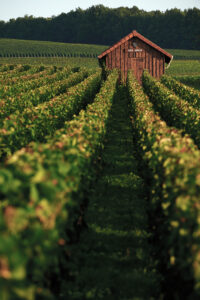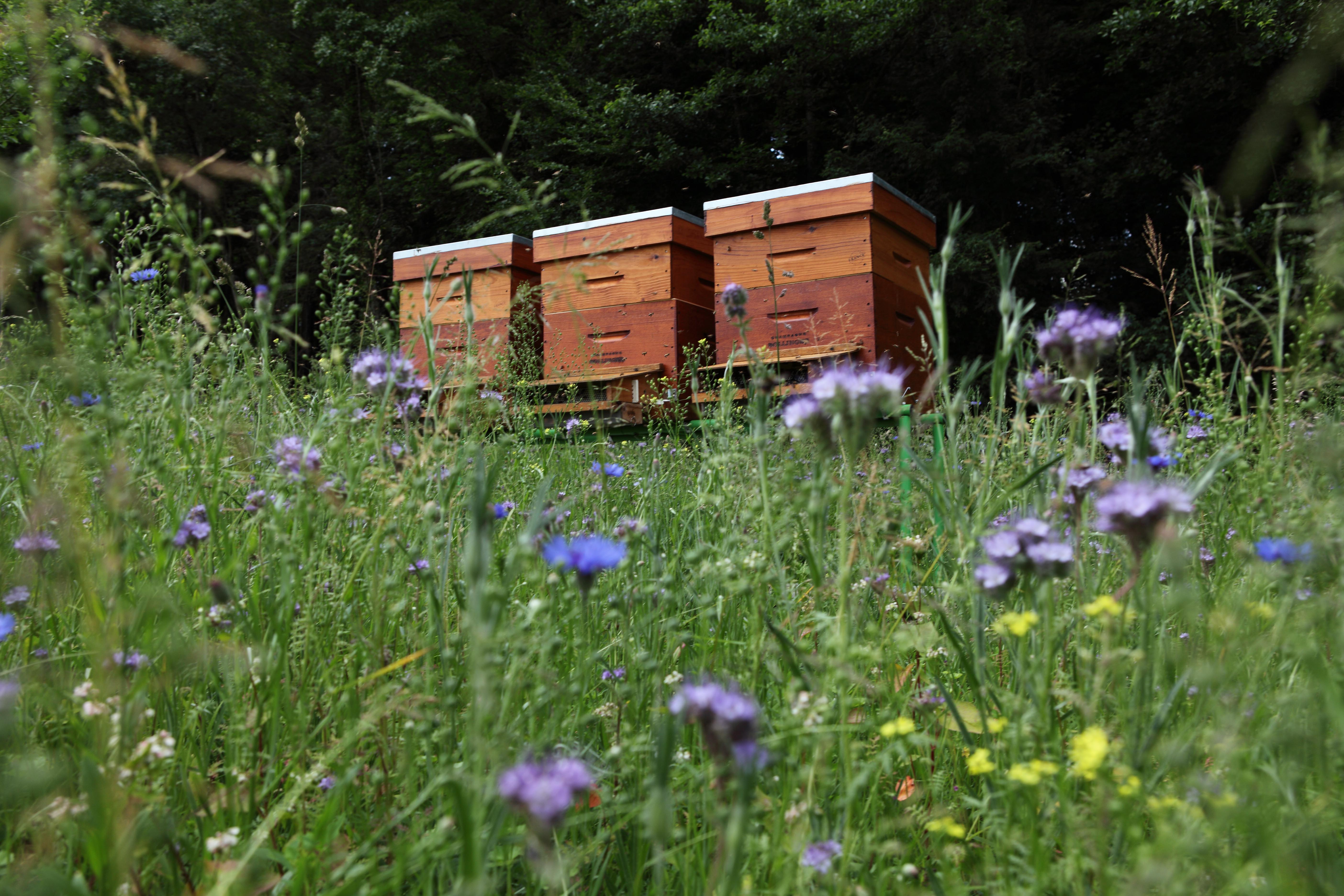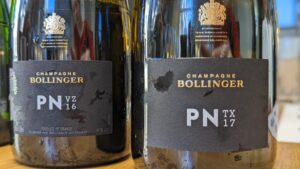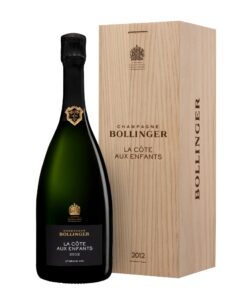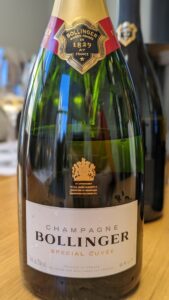Roasted hazelnuts, dried lilacs and honeysuckle soared through the air as the aromatics emanated from the glass to thrill and excite the intended drinker. As the wine caressed the palate, flavors of cranberry tart and baked golden apples with hints of cinnamon stick delighted along the creamy texture. And on the finish, the crisp freshness was pure magic when it combined with the fine, tiny bubbles that sensually glided along the mouth. An outstanding Champagne that is more than just a Champagne, a fine wine that is distinctive with a strong sense of place, deep concentration and overall elegance that is on par with an exquisite Grand Cru Burgundy. It is the 2012 Bollinger ‘La Côte aux Enfants’, which is a 100% Pinot Noir Champagne from the Grand Cru village of Aÿ, and it is an exceptional monopole vineyard that the Bollinger family has owned for centuries.
This is Bollinger’s first release of a single vineyard, representing many key pillars of this famous Champagne house. They have been run by the same family since the early 1800s; it has always been a family business focused on owning a large amount of vineyards themselves – today approximately totaling 445 acres. Pinot Noir has always been a strong focus, with the Bollinger house located in the middle of the Grand Cru village of Aÿ, surrounded by vineyards. This village is famous for having some of the best Pinot Noir grapes in the Champagne wine region.
Classic Bollinger
For many Bollinger fans, it has been the Champagne that drank like a fine wine as even its non-vintage has a multi-layer complexity, deep concentration and that classic creamy texture that could hold up to a serious multi-course meal. They have always stayed true to their foundation which is built on a majority of Pinot Noir grapes in their blend as their flagship Bollinger Non-Vintage Brut Special Cuvée has 60% Pinot Noir, a high proportion of reserve wines (wines that have been held back for several years) that can range from a jaw-dropping 50-60% and to make it even more astonishing, 1/3 of the reserve wines in their cellars have been aged in magnum bottles for an average of ten years. Finally, a portion of the wines are initially fermented in small Burgundy oak barrels.
And Bollinger fans could always depend on the house to keep these ridiculously high standards as well as never altering their principles to appease the latest trend, such as making Blanc de Blancs Champagne, made from 100% Chardonnay. As Bollinger’s managing director Charles-Armand de Belenet likes to say, “Bollinger is about Pinot Noir, Pinot Noir, Pinot Noir.” And it is serendipitous that he should be the managing director of such a globally renowned Champagne house that, in reality, is like a small Burgundy producer, owning its own vineyards and devoted to showing the terroir of those plots that have been in the family for generations, as Charles-Armand is from a tiny winemaking family in Burgundy.
100% Pinot Noir Terroir-Driven Wines
“This is a big change for Bollinger as the last new innovation was Bollinger Rosé, and that was about ten years ago, and now we have three new wines. It is a very exciting time for us,” exclaimed Charles-Armand as he started to talk about their new Pinot Noir projects. The projects include Vieilles Vignes Françaises (old pre-phylloxera Pinot Noir vines), Bollinger PN wines and the single vineyard ‘La Côte aux Enfants’ Champagne. When one considers how long Bollinger has kept offerings to a limited selection, with the last addition, a Rosé Champagne, added around a decade ago, it is quite the adventure for them now to dive into these very ambitious projects.
The Bollinger PN represents a 100% Pinot Noir Champagne with a majority of the fruit from the same village and vintage. For example, the current release, PN TX17 has a majority of Pinot Noir grapes from the Tauxières village in the Champagne wine region and a majority from the 2017 vintage. Charles-Armand said they wanted to bring the ideals that Bollinger was built on to the consumer in a much more direct and specific way. And hence, being able to release a wine mainly from one of their top Pinot Noir villages, giving an expression of various pockets of Champagne during a particular window of time, is the best way to present their core values.
To make these wines more accessible and consistent in their desire for excellence year in and year out, there would need to be a small amount of room to add other villages and other vintages to find an ideal balance. And so, 25% of the wine comprises those decade-old magnum bottles from grapes grown in the Tauxières village. Interestingly, the markings on the label, PN TX17, are used as a shorthand in the Bollinger cellars, written on small boards above stacked bottles, to indicate the year and provenance. Through time, Bollinger would like to release PN bottlings from various villages to emphasize the varying terroirs that Pinot Noir can beautifully transmit to the drinker.
Bollinger ‘La Côte aux Enfants’
Bollinger connoisseurs may already be familiar with the ‘La Côte aux Enfants’ vineyard, which is in the Grand Cru village of Aÿ, where the Bollinger house and many of Bollinger vineyards (that they have owned for centuries) are located, as they make a tiny quantity of red wine from the ‘La Côte aux Enfants’ vineyard. Charles-Armand noted that the ‘La Côte aux Enfants’ is one of their top vineyards as it is greatly prized for its opulence and power balanced by freshness and overall elegance. The red wine comes from the southern section of the vineyard, while this newly released single vineyard sparkling Champagne comes from the northern side as the fruit in that section retains more freshness.
This single vineyard wine highlights a very special Bollinger monopole (a designated area, in this case, a vineyard, owned entirely by one producer). But just like the village bottlings of Pinot Noir called PN, Charles-Armand says they will be excited to release different single vineyards that display outstanding qualities of an array of Bollinger plots.
When one thinks about how steadfast Bollinger has been to its principles of producing Champagnes as serious fine wines, these new releases are not so much an exploration of other areas that they haven’t touched upon in Champagne but a focus on the things that have always been a part of the soul of the house. Many Champagne drinkers who have always gravitated to Bollinger might have yet to learn the extreme practices that the family continues to implement with every bottle, as consumers weren’t that curious to delve into the details of Champagne in the past. But all that has changed with Champagne lovers wanting to understand the sense of place and all the nuances that go into every bottle being popped. Champagne is no longer only for celebrations but for well-crafted meals, long conversations, or to contemplate alone – a Champagne mediation of sorts.
And so, these new releases are not only exciting because it gives consumers a great way to go deeper into these remarkable plots but it allows, after all this time, for Bollinger to finally gain recognition for the extraordinary treasures that they have always brought to the Champagne fine wine world.
***Link to original article published on Forbes: https://www.forbes.com/sites/cathrinetodd/2022/12/17/1000-bottle-of-champagne-demonstrates-bollinger-as-a-pinot-noir-fine-wine-specialist/
Bollinger wants to get fine wine lovers more involved in learning about their vineyards and everything they do, so, they are renovating the existing Bollinger house to include 20 rooms where people can stay and participate in master classes and vineyard visits.
Also, Bollinger has another project to bring the idea of expressing terroir to the next level. Fermenting in barrels is an essential part of Bollinger Champagne and they currently have 4,000 used barrels allowing them to ferment plot by plot. They have a cooperage that fixes any issues with the barrels but now they want to make their own. They plan to pair the forest, where the oak originates, with the Champagne village, where the grapes are harvested. Charles-Armand said it would probably take 200 years to replace all the 4,000 barrels with ones that match particular plots but Bollinger is up for the challenge.
2012 Bollinger ‘La Côte aux Enfants’ Champagne: 100% single vineyard Pinot Noir from the Grand Cru village of Aÿ ; north side of this vineyard. Roasted hazelnuts, dried lilacs and honeysuckle on the nose and flavors of cranberry tart and baked golden apples with hints of cinnamon stick caresses the palate with a creamy texture, and on the finish, the crisp freshness is pure magic when it combines with the fine, tiny bubbles that sensually glide along the mouth; a breathtaking balance of deep concentration and overall elegance. Only 1,000 bottles made; suggested retail price is $1,000.
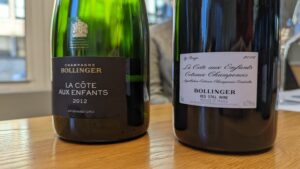
Photo Credit: Cathrine Todd
2016 Bollinger ‘La Côte aux Enfants’ Côteaux Champenois Rouge: A red still wine made from 100% single vineyard Pinot Noir from the Grand Cru village of Aÿ; south side of this vineyard. 2/3 of the grapes were destemmed and 1/3 were not destemmed. Pretty floral notes with ripe red cherries and anise seeds with forest floor and a touch of morel mushrooms with an overall charming quality with lots of chalky minerality on the finish.
A short explanation about how the PN village wines below are developed in the Bollinger cellars: the blend is chosen from a blind tasting among the cellar master and his team to find the best Pinot Noir wines of that vintage and that is how they decide which village they will concentrate on in any given year.
Bollinger PN VZ16: 100% Pinot Noir where the majority comes from the Grand Cru village of Verzenay and the 2016 vintage; 25% of reserve wines from the same Grand Cru village are in this blend. 50% of the wine was vinified in barrels and the other 50% in stainless steel tanks. The saline minerality typical with Verzenay vineyards is shining through with lemon zest aromas with a hint of brioche and tart green apple and a racy acidity on the palate with a fine-laced mousse.
Bollinger PN TX17: 100% Pinot Noir where the majority comes from the Grand Cru village of Tauxières and the 2017 vintage; 25% of reserve wines from the same Grand Cru village are in this blend. 50% of the wine was vinified in barrel and the other 50% in stainless steel tanks. Softer acidity and richer flavors such as candied ginger and peach cobbler with an underpinning of oyster shell and lemon confit with a delectable creamy body with touches of marzipan – delicious.
Bollinger Brut Special Cuvée: 60% Pinot Noir, 25% Chardonnay and 15% Pinot Meunier. Charles-Armand says this is the most challenging wine as they have to make it every year and deliver that classic Bollinger house style. 30% of Special Cuvée is vinified in used oak of 228-liter barrels, with some 400-liter barrels up to 40 years old. The final blend consists of 50% reserve wines of which 5-10% consists of reserve wines from magnums that average ten years in age. Complex nose of freshly made croissants with yellow flowers and lemon verbena tea with crumbled chalk and dried apricots with exquisitely fine bubbles with a long persistence. The multifaceted quality of the Bollinger Special Cuvée is unmatched within the non-vintage blends in Champagne.
